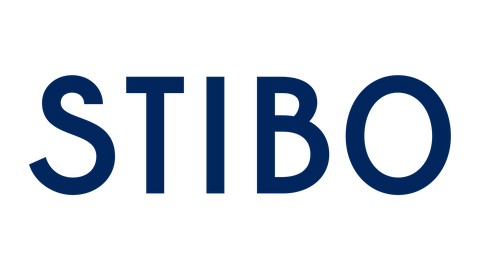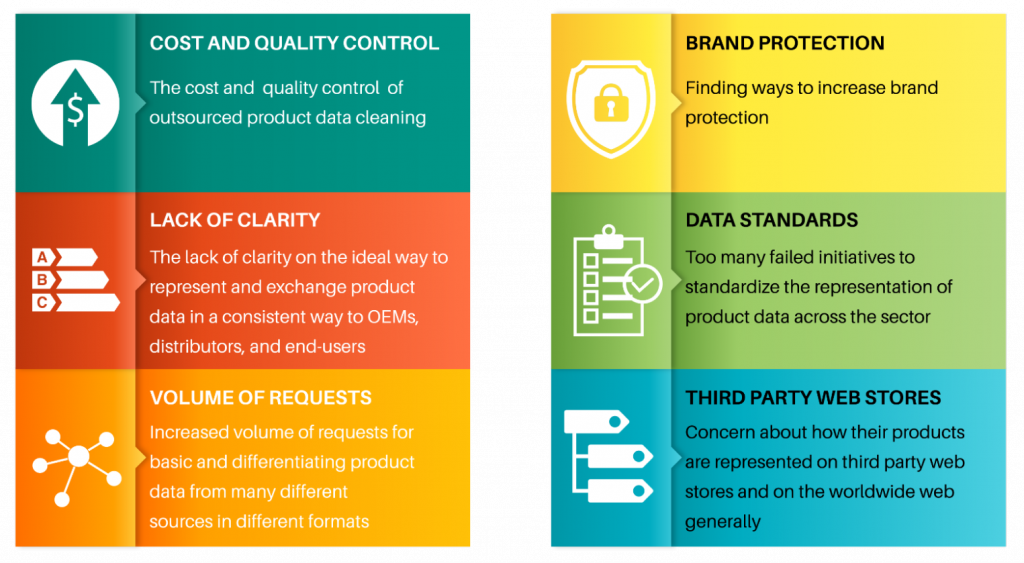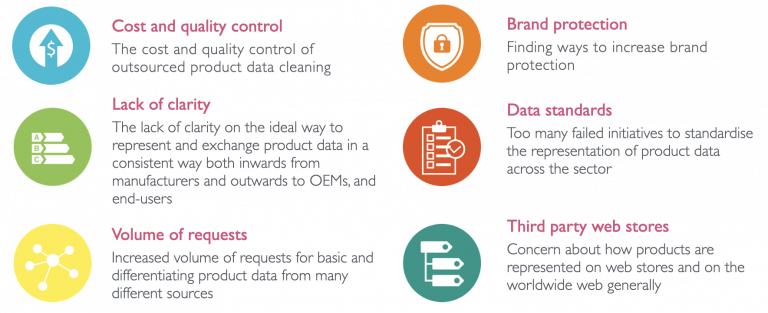Blogs
What is MIMOSA?
Introduction to MIMOSA MIMOSA™ is a non-profit association in California, USA with a global membership, focusing on open standards for digital transformation and interoperability in asset life-cycle management. It aims to facilitate critical infrastructure management through standards that enable vendor neutral digital eco-systems that support the creation, federation and management…
Understanding and implenting product classification schemes
Introduction to Hierarchical Classification Product classification schemes organize products into hierarchical structures, categorizing individual items into broader classes and families. This system enables businesses to systematically manage and identify their product offerings. Benefits of Standard Product Classification Adopting a standard product classification structure provides organizations with the flexibility to customize…
Why you should launch a data management program – A (data) message to the C-suite
The importance of Master Data Management (MDM) cannot be overstated in the rapidly evolving landscape of global businesses, particularly for executives in organizations aiming for unparalleled success. As companies expand, the complexity of operations and the volume of data increase, making an instinctive understanding of the business more challenging. This…
The SPIR process urgently needs to enter the 21st century
At KOIOS Master Data, our in-depth understanding of the SPIR (Spare Parts Interchangeability Record) process challenges comes from extensive MRO (Maintenance, Repair, and Operations) consultancy work. This firsthand experience highlights the detrimental impact of poor-quality SPIR data on cost, time, resources, and the environment in the oil and gas sector.…
Introduction to SPIR Challenges
In oil and gas upstream projects, the transition from engineering design to operational readiness hinges significantly on the accurate and timely provision of Spare Parts Interchange Lists (SPILs), also known as Spares Parts Lists and Interchangeability Records (SPIRs) or Recommended Spare Parts Lists (RSPLs). These critical documents, furnished by Equipment…
Understanding the Risks of an Inadequate Spares Strategy
The Hidden Costs of MRO Management Most production environments, particularly those in asset-intensive industries, rely heavily on Maintenance, Repair, and Operations (MRO) resources to keep crucial machinery operational, safe, and efficient. Despite this, MRO inventory seldom receives the executive attention it warrants, often sidelined as ‘indirect’ material and overlooked in…
The Importance of Maintenance Bills of Material
Introduction to the M-BoM Maintenance Bills of Material (M-BoM) are pivotal in distinguishing “best in class” facilities from their counterparts. These documents are integral for facilities committed to operational excellence, yet surprisingly absent or incomplete in many organizations. The Role of the M-BoM in Operational Efficiency Facilities without M-BoMs often…
What is the hidden cost of holding inventory?
To accurately assess the true expense of inventory management, it’s essential to consider the Inventory Carrying Cost (ICC) or Holding Cost Factor (HCF). The HCF encapsulates the financial commitment involved in maintaining and storing inventory before its actual need arises. This factor is quantified as a percentage of the total…









